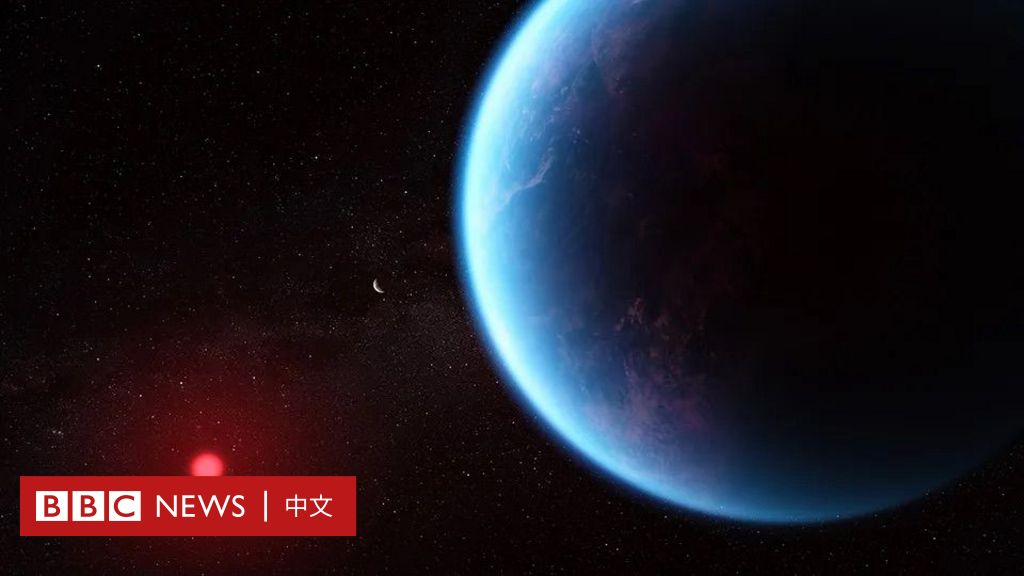Exoplanet K2-18b: Is There Life Beyond Earth? New Discoveries Spark Debate
The search for extraterrestrial life has taken a thrilling turn with renewed focus on exoplanet K2-18b. This super-Earth, orbiting a red dwarf star 124 light-years away, has captivated scientists for years, but recent discoveries have ignited a firestorm of speculation about the possibility of life beyond our solar system. Could K2-18b be harboring life as we know it, or something entirely different? Let's delve into the latest findings and the ongoing debate.
K2-18b: A Closer Look at a Potentially Habitable World
K2-18b, discovered in 2015 by NASA's Kepler space telescope (later confirmed by the Gaia mission), resides within the habitable zone of its star, K2-18. This means it's at a distance where liquid water, a key ingredient for life as we understand it, could potentially exist on its surface. However, being a super-Earth, it’s significantly larger and more massive than our planet, leading to complexities in understanding its atmospheric conditions and habitability.
Key Characteristics of K2-18b:
- Mass: Approximately 8.6 times the mass of Earth.
- Radius: Approximately 2.6 times the radius of Earth.
- Orbital Period: Approximately 33 days.
- Star Type: Red dwarf star (K2-18).
- Location: Within the habitable zone of its star.
The Game-Changing Discovery: Biosignatures in the Atmosphere?
While the presence of liquid water is crucial, it's not sufficient proof of life. The real excitement stems from recent studies analyzing K2-18b's atmosphere. In 2019, researchers detected the presence of water vapor in its atmosphere using data from the Hubble Space Telescope. This was a significant breakthrough, but further research was needed to confirm the findings and look for other potential biosignatures – indicators of life.
More recent analyses, employing advanced spectroscopic techniques, have suggested the presence of other molecules, sparking debates about their potential origins. While the evidence isn't conclusive, the possibility of detecting molecules associated with biological processes adds significant weight to the ongoing investigation. Further research, particularly with the upcoming James Webb Space Telescope (JWST), is crucial to corroborate these findings and potentially identify more definitive biosignatures.
Potential Biosignatures Detected (and Ongoing Debates):
- Water Vapor: Confirmed presence, a fundamental requirement for life as we know it.
- Methane: Detected in some analyses, but its origin (biological or geological) remains unclear. Methane is a potent greenhouse gas and its presence in significant amounts could indicate a warm and potentially habitable environment, but also could be the result of volcanic activity.
- Other Organic Molecules: The possibility of other organic molecules is under investigation. Their detection would significantly strengthen the argument for the presence of life.
The Challenges and Future Research
Despite the exciting prospects, many challenges remain. The distance to K2-18b makes detailed observation difficult, even with advanced telescopes. The nature of its star, a red dwarf, presents unique challenges. Red dwarfs emit significant flares of radiation which could be detrimental to life. Furthermore, the planet's high mass suggests a potentially dense atmosphere, making the detection of biosignatures more complex.
Future research will rely heavily on the JWST. Its advanced capabilities offer a far greater chance of identifying more conclusive biosignatures and potentially characterizing K2-18b's atmosphere in far greater detail. Further research using different observation techniques and modeling will also be vital.
Conclusion: A Promising Lead in the Search for Extraterrestrial Life
While the existence of life on K2-18b remains unconfirmed, the recent discoveries provide compelling evidence warranting further investigation. The planet's location within the habitable zone, the presence of water vapor, and the potential detection of other biosignatures offer a tantalizing glimpse of the possibility of life beyond Earth. The ongoing research, leveraging the power of advanced telescopes and sophisticated analytical techniques, will hopefully bring us closer to answering one of humanity's most profound questions.
Keywords: K2-18b, exoplanet, habitable zone, biosignatures, extraterrestrial life, James Webb Space Telescope, JWST, super-Earth, red dwarf star, NASA, Kepler space telescope, water vapor, methane, space exploration, astrobiology.
Call to Action: Stay tuned for updates on the K2-18b research! Follow leading space agencies like NASA and ESA for the latest discoveries in the search for extraterrestrial life.
